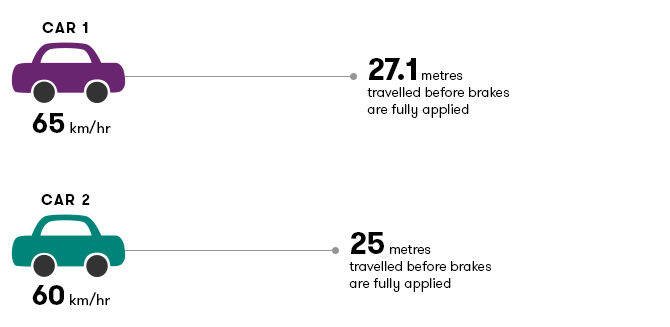
If A Driver Looks Down For Just One Second While Driving 65 MPH his vehicle has traveled almost 100 feet.
The Blink That Could Cost You: Dangers of Looking Away for a Second at 65 MPH
We’ve all been there: a quick glance at the phone notification, adjusting the radio dial, or grabbing a dropped item. But on the road, even a single second of diverted attention can have disastrous consequences. Let’s explore what happens when a driver takes their eyes off the road for just one second while traveling at 65 mph.
The Distance You Travel Blindfolded:
At 65 mph, you’re covering a staggering 95.6 feet (29.1 meters) every second. That’s almost the length of a basketball court! In one short blink, your car travels blindfolded, relying solely on reaction time and fate. This distance is significant, putting you at risk of missing crucial details on the road ahead, like stopped traffic, sudden hazards, or pedestrians.
Reaction Time Lag:
The human reaction time to a visual stimulus averages around 250 milliseconds (a quarter of a second). Add to that the time it takes for your brain to process the information and initiate braking, and you’re looking at a potential delay of close to a full second. During this lag at 65 mph, you’ll travel another 68 feet (20.7 meters), significantly increasing the stopping distance needed to avoid a collision.
Chain Reaction of Risks:
The danger doesn’t stop there. If the driver in front of you slams on their brakes, your increased following distance due to the initial distraction makes a rear-end collision more likely. Swerving to avoid a hazard becomes riskier with reduced reaction time, potentially leading to loss of control or veering into oncoming traffic.
Mitigating the Risks:
Here’s how to stay safe:
- Minimize distractions: Put your phone away in a silenced location. Delegate tasks like adjusting music to passengers.
- Maintain a safe following distance: The 3-second rule is a minimum; increase it in bad weather or heavy traffic.
- Practice good anticipatory driving: Scan the road ahead, including shoulders and intersections, for potential hazards.
- Prioritize sleep: Drowsiness slows reaction times significantly. Make sure you’re well-rested before driving.
Remember, the road demands your full attention. A single second of distraction can have life-altering consequences. Keep your eyes on the prize – a safe and enjoyable journey for yourself and others.
image taken from this site; https://www.science.org.au/curious/technology-future/physics-speeding-cars
